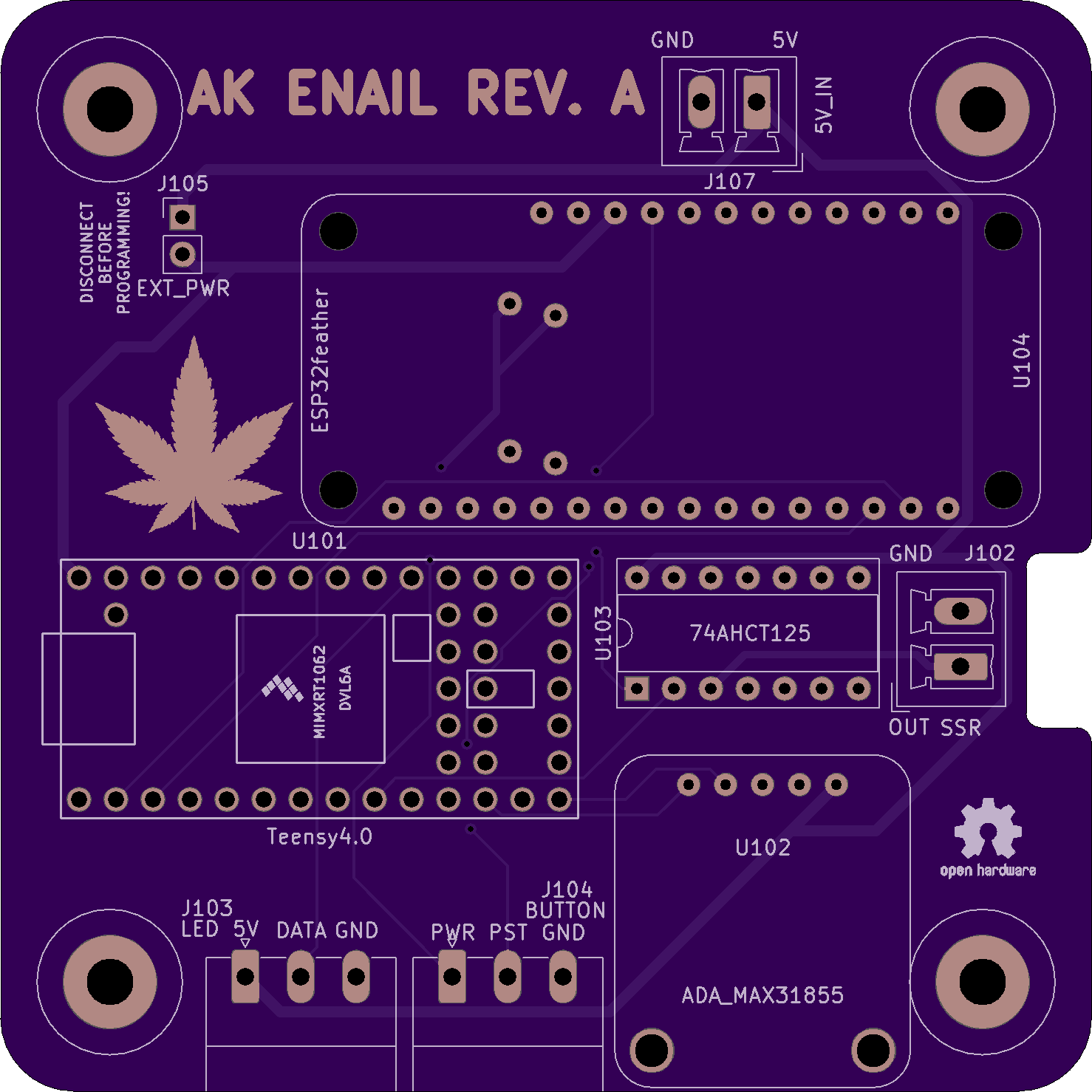Hello, I got my first enail about 6 months ago - A cheap imported unit from a headshop near me, and quickly decided that I wanted to build my own PID controller from scratch, integrated into a coffee table.
Here is a photo of the prototype on a breadboard:
 I'm posting here both to share my progress on the project and also for any feedback other people might have about the design. Here is a photo of the control flow in node-red as well as the dashboard itself:
I'm posting here both to share my progress on the project and also for any feedback other people might have about the design. Here is a photo of the control flow in node-red as well as the dashboard itself:


(Yes, I'm aware of the wonkiness with the smoothness of the output, my D term is way too high, and my whole loop is quite poorly tuned.)
Finally, here is a link to the github repo with the code and early drafts of the PCB:
https://github.com/tobycyanide/teensynail
I'm posting here for feedback, suggestions, feature requests, anything you would like to see. I plan on releasing this completely open source - anybody who wants to build their own can for around $100 USD, but I will also possibly be selling finished versions. I have very little experience with most of these technologies, having toyed around with arduino in my younger days a little but that's about it.
Here is a photo of the prototype on a breadboard:



(Yes, I'm aware of the wonkiness with the smoothness of the output, my D term is way too high, and my whole loop is quite poorly tuned.)
Finally, here is a link to the github repo with the code and early drafts of the PCB:
https://github.com/tobycyanide/teensynail
I'm posting here for feedback, suggestions, feature requests, anything you would like to see. I plan on releasing this completely open source - anybody who wants to build their own can for around $100 USD, but I will also possibly be selling finished versions. I have very little experience with most of these technologies, having toyed around with arduino in my younger days a little but that's about it.










